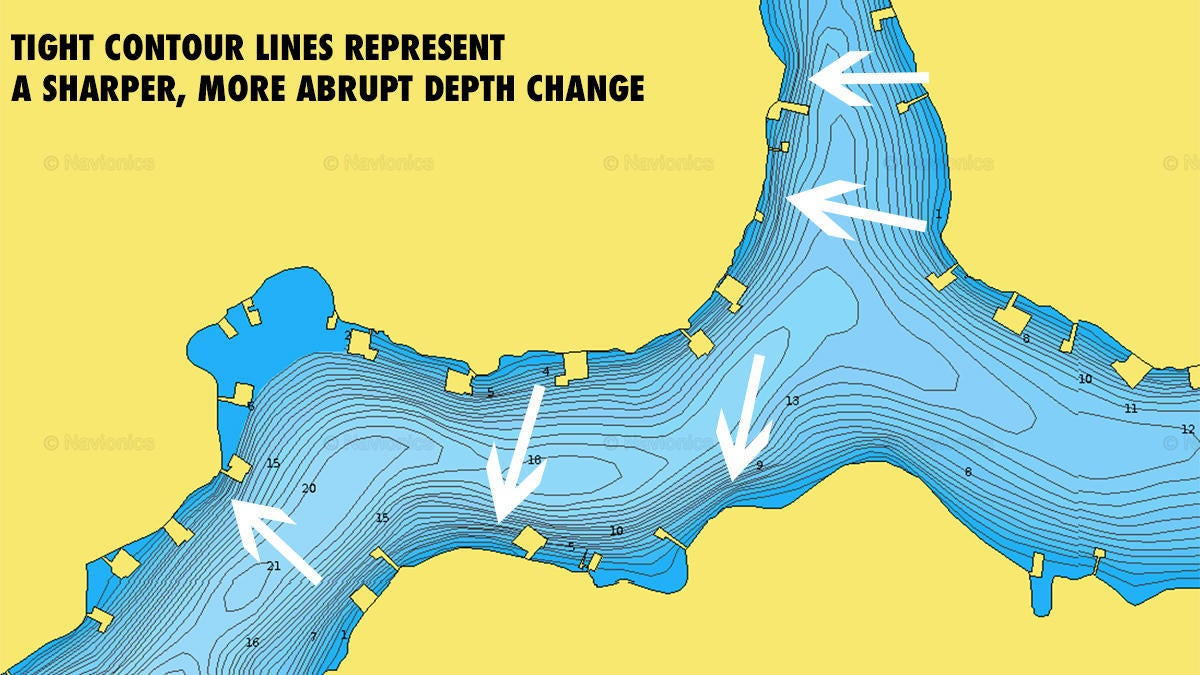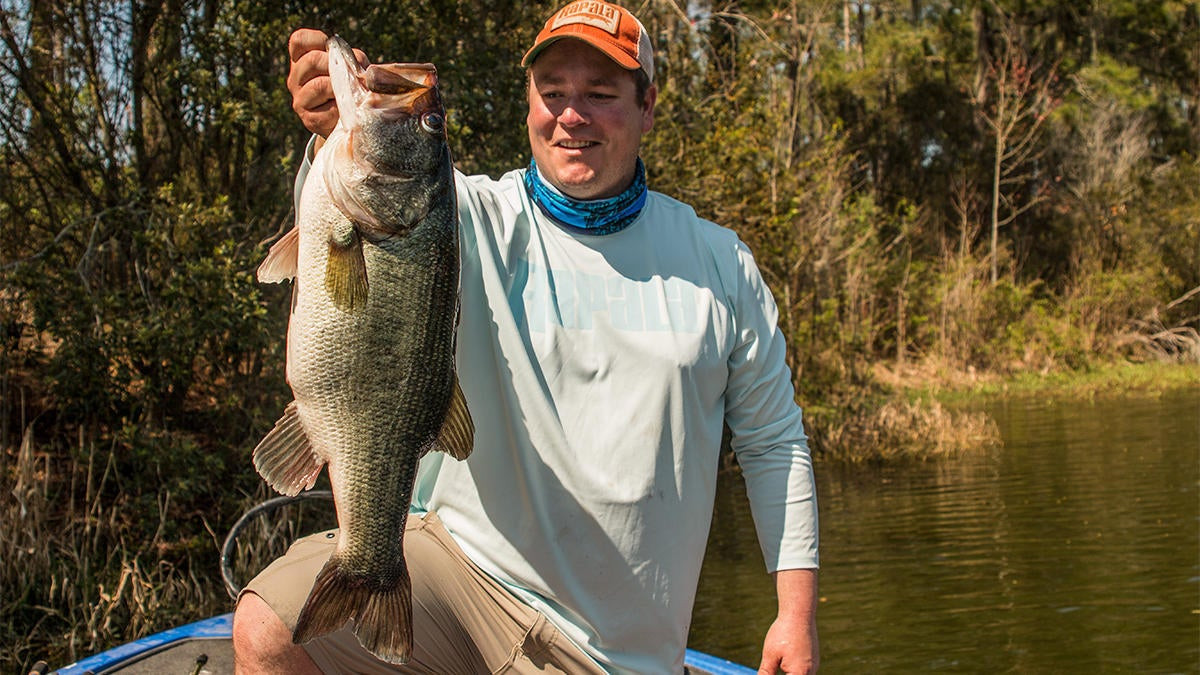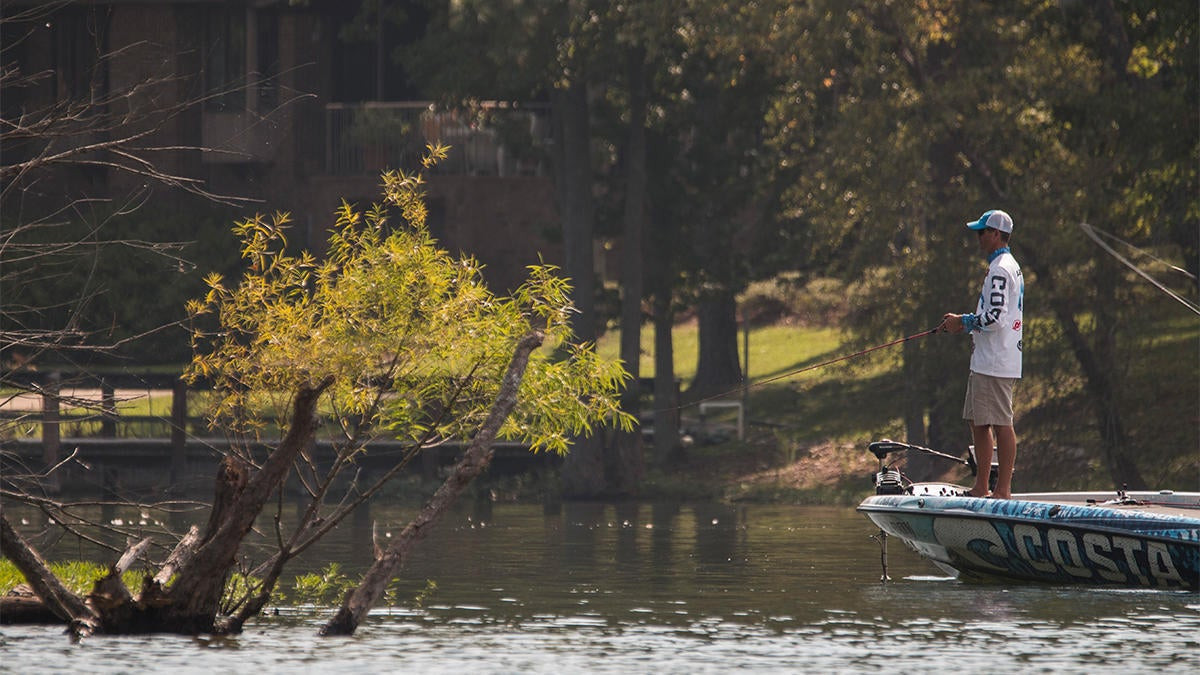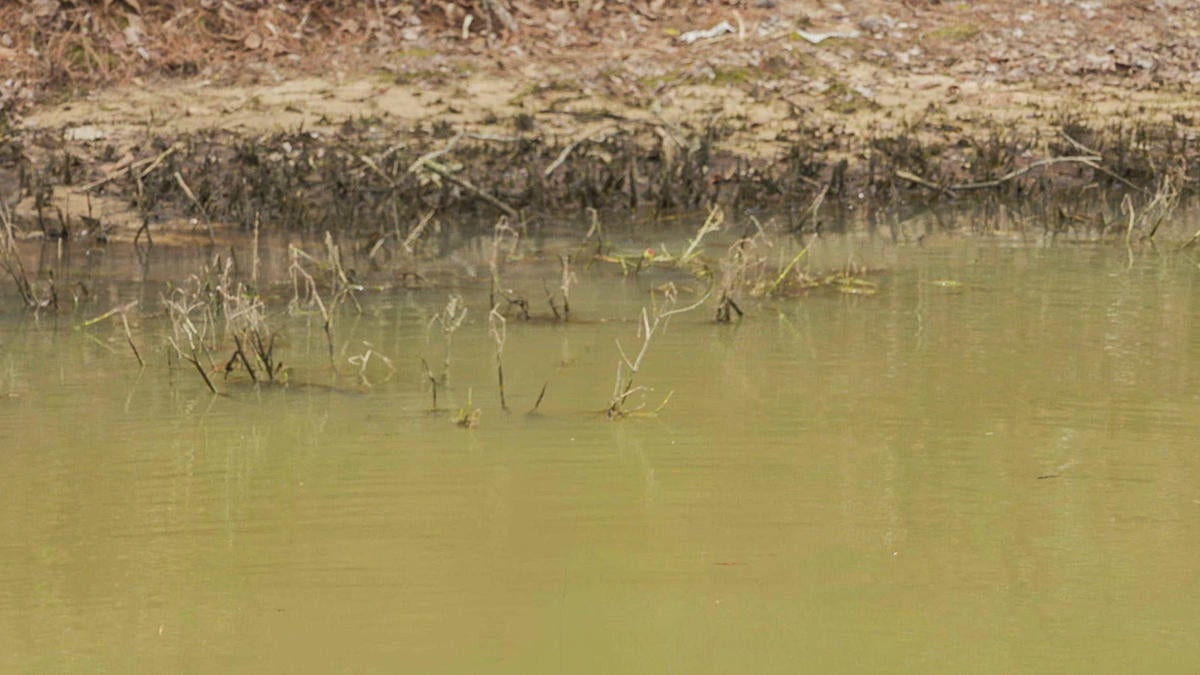I don’t know of a single angler who will troll past a patch of bank grass without making a few casts. It’s easy, however, to get a few bites and assume that every grass bed is filled with big bass. That’s not the case and this generic line of thinking will often hurt your chances of success throughout the day.
Not all grass beds are the same. If you’re looking for more consistent success when targeting grass, consider these factors and you’ll notice a big increase in the quality and quantity of your catch.
Proximity to deep water
Unless you’re fishing in the heart of the spawning period, you’ll normally enjoy a lot more success when you target grass beds close to deeper water. In my particular area, I tend to catch more bass when my boat is in 6 feet or so of water while I’m casting to bank grass.
This abrupt depth change represents verticality, which is very important when you’re targeting mature bass. They don’t get big by being dumb, so they know that this deep water adjacent to bank grass gives them the best of both worlds. They can slide up and use the bank grass as a strategic ambush point or they can slide out into the deeper water when they’re more inactive. With just a few kicks of their tail, they can change their entire living situation without expending much energy.
It’s also important to understand that adjacent deep water isn’t always found at the mouth of pockets or on the main river stretches. Pay close attention to your mapping-whether it’s mapping software or paper maps-and look for any long creek where the channel swings close to the bank. If you’re able to find bank grass in the immediate area, you can almost bet you’re going to get a bite.
Irregularities are key
Years ago while filming with bass fishing legend Larry Nixon, he explained bass positioning to me in very simplistic, yet practical terms. It’s been something that has stuck with me to this day.
“Bass will always prefer an edge,” he said. “But as soon as they find something different on that edge, they will stop there and stay there. I look for anything different that breaks up an otherwise straight, featureless edge.”
When I talk about irregularities, it can literally be anything that-like Nixon said-breaks up a boring, straight-lined grass edge. But more specifically, I’m looking for points and pockets. These points and pockets don’t have to be big whatsoever; they can be as big as the ball cap on top of your head. It doesn’t take much to attract a bass.
If you don’t specifically target high-percentage irregularities, you’ll be plagued by inefficiency. It can take a long time to break down every stalk of bank grass you run across and you’ll end up wasting a bunch of time. Instead, you have to make the conscious decision to skip some of the crappy looking stuff in favor of the “juice”.
These points and pockets act as feeding stations for the bass. I’ll use the term “strategic ambush point” again because that’s exactly what they are. They can hide in these pockets and behind these points and wait for wind or natural current to sweep forage by them. The bass get an easy meal and they had to burn very few, if any, calories to get it. It’s a win-win situation for them.
Pay attention to bottom composition
Bank grass holds a lot of bass. We’ve established that at this point. But what makes particular grass beds consistently produce all year long has a lot to do with bottom composition. In other words, what’s the bottom made out of?
I’m certainly not saying that you won’t catch grass bed bass in areas with a mucky bottom. It’s totally possible. I am saying, however, that your chances of continued success increase exponentially if you can find bank grass with some sort of hard bottom nearby. I’m not necessarily talking about pea gravel or rock. Sometimes just a small shell bed will work or a simple sandy bottom. It adds a little gravy to the proverbial biscuit, in my redneck terms.
How in the world are you supposed to know what type of bottom composition you’re dealing with? That’s a good question and one that allows for several possibilities. When I’m scouting a new area, I’ll often poke my rod tip into the middle of the grass bed. If I feel or hear a “crunch” indication sandy bottom, I’ll make a waypoint and be sure to visit the grass bed at a later time. If it feels like nasty goop, I move on.
If you don’t want to mess up a grass bed or risk damaging a rod tip, you can also throw a small squarebill or Carolina rig right in front of the grass. This will allow you to feel just as well while not alerting nearby bass to your presence.
Is there any other cover around?
I wish I could have some sort of fancy, scientific explanation to this but alas, I do not. I can almost guarantee you through personal experience, however, that you’re going to catch more bass from bank grass when some sort of secondary cover is present. In my opinion, it simply makes a good spot even better.
This secondary cover could be several things including, but not limited to laydowns, stumps, old dock posts, dock ladders, dock walkways or even an old lawn chair that got blown into the lake back in 1978. Anything that could add to the appeal for a bass is fair game.
Certainly don’t bypass good-looking grass beds if they lack secondary cover. But I’m just suggesting that you tighten up and pay a little closer attention to the ones that are adorned with something a little “extra”.
If you’re not careful, water level will burn you
My home lake has a really bad-and unfair-reputation among regional tournament anglers. These guys come to town and practice for several weekdays before the Saturday event and catch a bunch of bass in the bank grass. They think they have it figured out and don’t bother to find a backup plan. But when the weekend comes, they can’t catch squat and their weights are awful.
But it’s not the lake’s fault. The anglers aren’t bad fishermen. But the water drops every weekend when power demand increases and the out-of-towners don’t account for it. That’s why locals normally win our tournaments; because water levels can and will wreck your game plan when you’re fishing bank grass.
You can still catch some bass in bank grass when the water level is low, but it’s not nearly as good. You’re going to find bass as the very edge of the grass beds and mostly in front of the grass, often suspended. As boring as it can be, I’ve had sucess dragging a Carolina rig parallel to the fronts of these grass beds and pitching a weightless wacky rig in front of them.
Water level is perhaps the most important piece of the puzzle when you’re targeting bank grass, so it’s imperative that you pay close attention to it throughout the week. The best trick I’ve found is to put a small rock a few inches above the water line on the side of the boat ramp. This rock will serve as a measurement tool that tells you what the water level has done lately. It can be an enormous help and can save you hours of frustration.
The next time you go fishing with the intention of targeting bank grass, pay close attention to these five factors-even if you have to write ’em down or something. If you can keep them in the forefront of your mind, you can quickly strike gold and enjoy one of your more memorable days of the year.

















